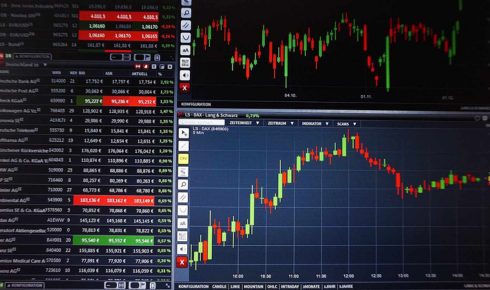
Trading is the act of buying and then selling financial instruments to make a profit. Such transactions give birth to the global financial markets, where millions of transactions take place day in and day out. This has become even more popular in India, with all of India interacting with retail investors, institutions, and professionals in the Stock Markets Today.
What Is Trading?
At its simplest, trading consists of an exchange of an asset-for example, shares, and currencies, for money. Traders expect to profit from price changes that may take place due to possible economic events or performance by a company, or market sentiment, as shown through price movement.
The time horizon and the approach differ in trading and investing. Investors usually keep hold of an asset for the long term to capture long-term growth, whereas traders keep their positions from minutes to hours, days, or weeks, depending on their strategies.
Basics of the Stock Market
The stock market is a fairly simplified type of system in which parties come together to actually trade shares in a publicly quoted company. For example, in India, trading in equities can be done on stock exchanges governed by the concerned authorities, which ensure transparency and fairness.
There are fundamentally two types of markets:
Primary Market- In this market, shares are initially distributed to companies in Initial Public Offerings (IPOs).
Secondary Market- Here, the investors trade shares among themselves once the company has been listed on the exchange.
The Stock Markets Today are affected by price changes based on demand and supply. If there are buyers interested in a stock, the price rises. If more sellers are in the market, then typically this price falls.
Participants in the Stock Market
Different players in the market are:
Retail Traders: Individual investors trading for personal gain.
Personally have Investment Value in the Stocks of Different Investment Companies: Large organizations like mutual funds or insurance companies value an investment.
Foreign Persons: Entities from overseas that participate in the domestic markets.
Market Makers: Have the same thing, but provide liquidity by always being ready to buy and sell.
The roles each plays ensure a steady flow of transactions as well as activity in the market.
Why People Trade
There are many reasons a person could trade:
Short-Term Gains: When they gain trade from price differences in a very short period.
Diversification: Spreading the risks of investment among different assets.
Liquidity: Quickly convert holdings to cash.
Speculation: Predict future price changes and benefit from the resulting changes.
Types of Trading
The term trading covers a variety of styles, each of which has different objectives, risk levels, and time horizons.
1. Intraday Trading
Day trading is buying and selling securities on the same trading day. This means that the trader will close out all positions before the end of the trading day, so he is not exposed to overnight risk.
2. Swing Trading
This is holding a position for a couple of days to weeks, depending on when the trader wants and if he can capture that price movement from short to medium-term price action. Swing traders usually employ technical and fundamental aspects in their decisions of entry and exit.
3. Position Trading
Position traders rely on a broader trend of the market to hold securities for weeks or months.
4. Scalping
This is trading done by scalpers in nanoseconds by using the tiniest possible movement in the prices, often tens or even hundreds of trades are executed by them within a day.
5. Delivery Trading
In this kind of trading, the trader buys shares and keeps them for a while after a trading day. These shares will be transferred to his Demat account, and they can be kept in the same until it is decided so.
Understanding Market Orders
When trading today in the Stock Markets, doing the different types of orders helps in the effective execution of trades:
Market Order: Buying or selling at current market prices.
Limit Order: Setting a specific price to execute the trade.
Stop-Loss Order: An order placed to sell a security when it hits a certain price to technically limit potential losses.
Tools and Analysis in Trading
All traders, though, depend on the tools as well as analysis in considering the decision:
Technical Analysis: Involves the utilization of charts and some indicators to analyze price patterns and movements of the price.
Fundamental Analysis: The study of a company’s financial health, earnings, and relative standing in the industry.
Market News: These are sourced from economic announcements, changes in policies, and corporate news, which can influence the price movement.
With technology, real-time data, analytical tool use, and instant execution have become possible through trading platforms in the Stock Markets Today.
Risk Management in Trading
Risk management is the fundamental skill for successful trading. Without such risk management, unexpected losses can invalidate even otherwise successful trades. The major controls of risk are:
Position Sizing: Deciding how much capital to allocate to each trade.
Avoiding concentration in a single stock or sector.
Stop-Loss Placement: Exiting before one’s losses become too great during a trade.
Emotional Discipline: Avoiding impulsive decisions from fear or greed.
Conclusion
Learning what trading and the very basics of stock market transactions are is the first step to participating in the Stock market today. With various types of trade, each has its way of making a profit on the fluctuations of the market, but they’re not a risk-free game and have specific requirements.


